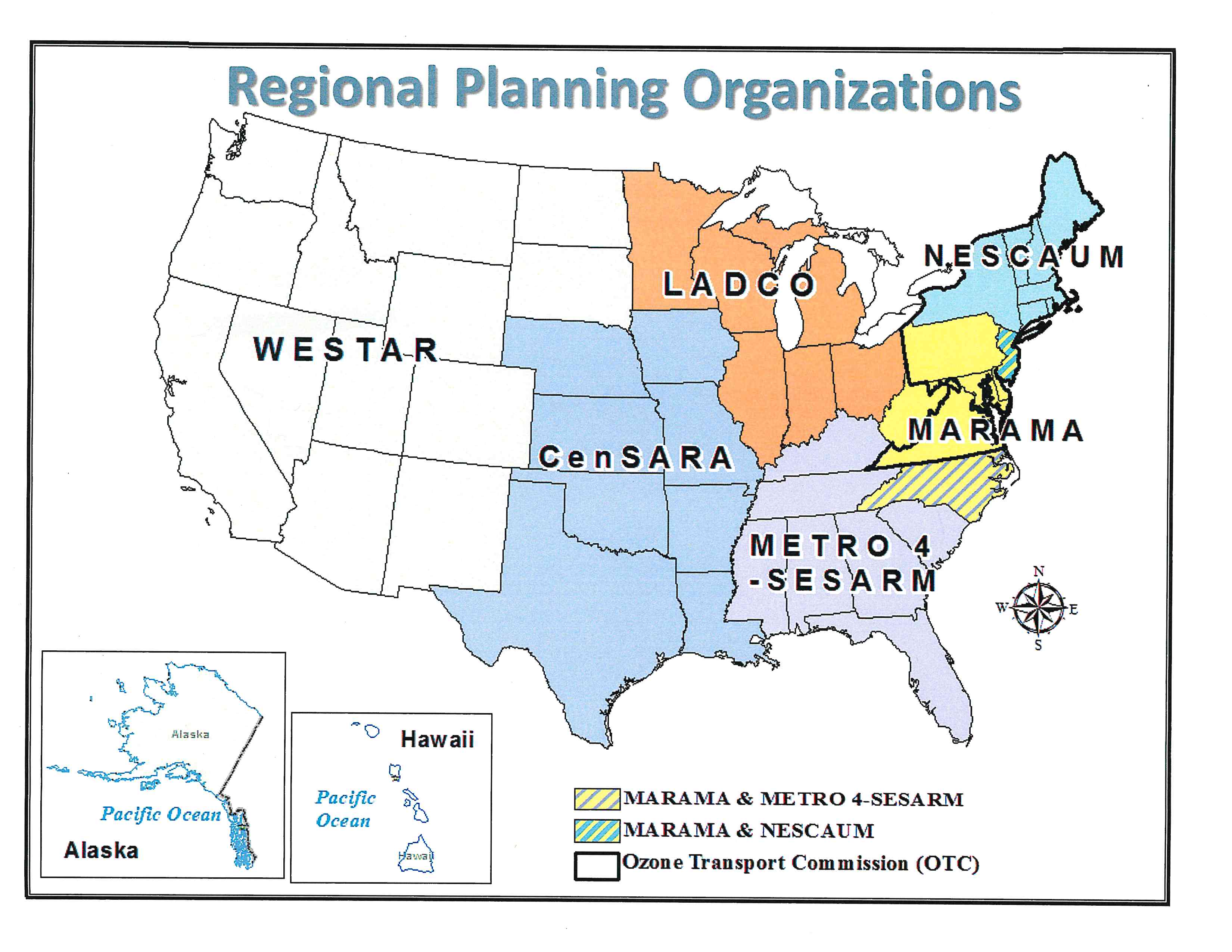Regional Haze: CenSARA
Texas belongs to the Central States Air Resource Agencies—eight states that work together reducing regional haze.
The SIP files on this page are hosted by the Texas Records and Information Locator (TRAIL) web archive . If you need assistance with a file, please contact siprules@tceq.texas.gov.
Central Regional Air Planning Association
Six regional planning organizations in the U.S. work together to reduce regional haze. Texas belongs to the Central Regional Air Planning Association and CenSARA
, which includes eight states—Nebraska, Kansas, Oklahoma, Texas, Iowa, Missouri, Arkansas, and Louisiana. Minnesota left CenSARA and joined LADCO.
Regional Planning Organizations
WESTAR : Western States Air Resources Council (also affiliated with WRAP or Western Regional Air Partnership)
LADCO : Lake Michigan Air Directors Consortium (also known as Midwest Regional Planning Organization)
MARAMA : Mid-Atlantic Regional Air Management Association (also affiliated with MANE-VU )
NESCAUM : Northeast States for Coordinated Air Use Management (also affiliated with MANE-VU )
CenSARA : Central States Air Resource Agencies (also known as CenRAP)
METRO 4-SESARM
: Metro 4-Southeastern States Air Resource Managers (also known as VISTAS)
(Metro 4 represents seventeen southeastern metropolitan air pollution control agencies)
2009 Regional-Haze SIP Consultation Meetings
The TCEQ held three SIP-related consultation meetings on regional haze by conference call and invited participation from the following authorities:
- Federal Land Manager for the Texas Class I areas at Big Bend and Guadalupe Mountains National Parks;
- Federal Land Managers in Class I areas of adjacent states, including personnel of National Park Service, U.S. Fish and Wildlife Service, and U.S. Forest Service;
- tribes in Texas and adjacent states;
- other surrounding states that may have an impact on Texas Class I areas; and
- the U.S. Environmental Protection Agency.
The three consultation meetings from July 2007 have been summarized . Invited participants are listed. The purpose of the calls was to consult with state, federal, and tribal authorities to further develop the Texas Regional Haze SIP revision. Through announcements on the BART and SIP e-mail notification system, other interested parties such as the general public, environmental groups, and industry, were invited to listen in to the conference calls and submit comments and questions by e-mail.
